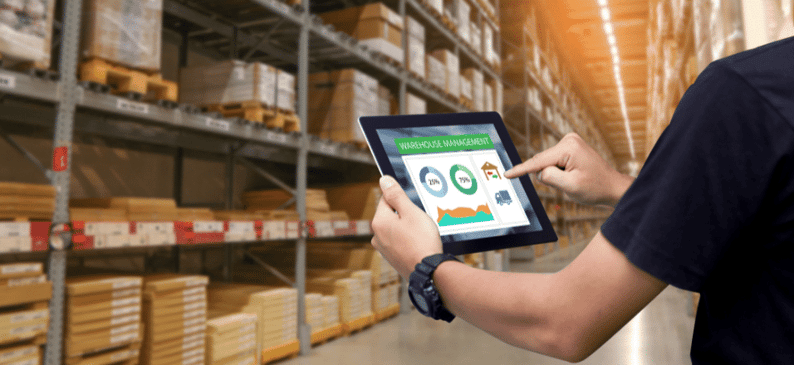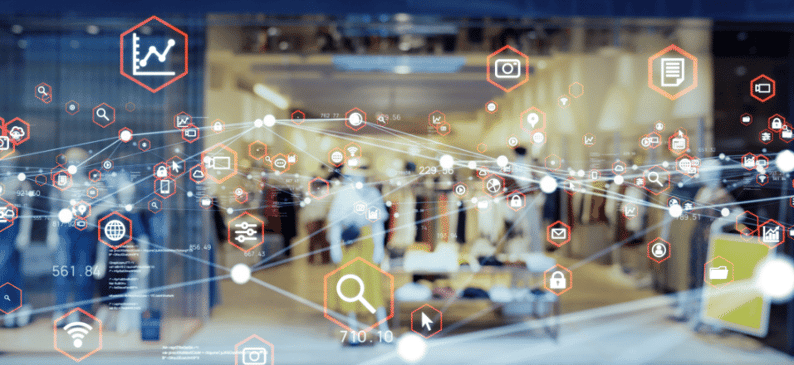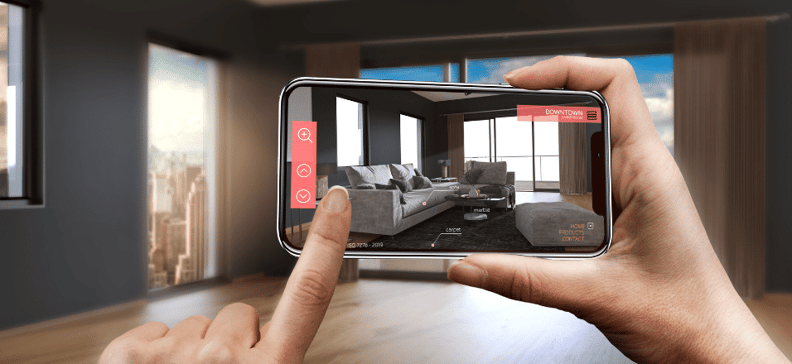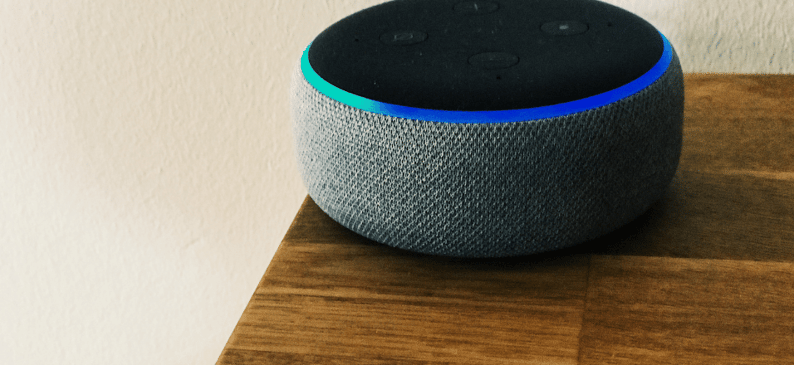There's no doubt that technology has significantly impacted the retail industry. From the way we shop to the way businesses operate, technology innovation has been at the forefront of shaping the retail industry and the customer experience along with it. As we move into the future, it's clear that technology will continue to play a vital role in evolving the retail landscape.
.png)
Before we dive into the technologies that are transforming the industry, it's vital to understand how the consumer's mindset has changed along with technology over the past decade. These days, customers prioritise ease and convenience, and with technologies improving and becoming more readily available, it shows no sign of slowing.
With new technologies being introduced, it was predicted that they would kill off the physical stores. Instead, it has forced the companies to adapt to the latest technologies and use them to their advantage by working hand in hand with online channels.
Let's take a look at some of the ways technology is transforming the retail sector, note that some of these technologies interlink with one another such as AI with Automation and Voice Commerce and AR with Hyper-Personalisation:
Topics covered:
- M-Commerce, The New E-commerce
- Automation
- AI (Artificial Intelligence)
- Hyper-Personalisation
- Indoor Positioning Systems (IPS)
- AR (Augmented Reality)
- Voice Commerce
M-Commerce, The New E-Commerce
.png)
According to Statista, one-third of all online shopping during 2019 in the UK was carried out on a mobile device. By 2024, it is forecasted that mobile commerce has a predicted revenue of an astounding £105 billion, which is more than double than what was achieved in 2019.
With more luxurious products becoming more attainable with the likes of buy now pay later schemes, consumers are more likely to begin their shopping journey with online research, usually starting with checking customer reviews and feedback before making a purchase.
Due to this, its essential retail brands ensure consistency across all platforms. Customers expect each platform to have the same look and quality of customer service; therefore, each platform must complement each other by working together.
People often think of online shopping as the killer of the high street and physical stores. However, the rise of online shopping is more beneficial for in-store than most people would think. In 2021, 29.2% of sales in the UK were made online, with over 60% of shoppers still keen to shop in-store. Often, the customer's journey starts online and can continue on to another platform leading to an in-store purchase.
Mobile apps are the new normal for brands in almost every industry, from finance, hospitality, real estate, media, travel and tourism, transport, healthcare, construction plus many more. The retail industry is one of the mobile-first leaders with in-app purchases sure to become the main way we shop and purchase goods in the future.
Automation
.png)
Automation technology is and has been a game-changer in the retail industry, impacting every aspect from customer service to inventory management, warehouse packaging and delivery. Automation has removed a lot of human error and improved the speed of service leading to enhanced efficiencies, improved productivity and increased revenue.
Automation in customer service has created a speedy, direct and personalised customer experience that cannot be replicated with a manual process. Machine learning-powered robots can pick, pack and organise packages much quicker, saving the company cost, and time and reducing human error. There are currently trials for drone delivery, which will save companies even more costs and time, which can then be reinvested back into other company areas.
All jobs will be impacted by technology; in its automation research across retail sectors, McKinsey Global Institute found that over half of current retail tasks are technically automatable. However, while technology makes some current labour unnecessary, demand for human skills will grow elsewhere in the system as new activities emerge such as the ability to operate and work alongside automation machinery. Automation will diminish some tasks, expand others and create some new ones altogether.
AI (artificial intelligence)
.png)
AI, also known as artificial intelligence, is reshaping the retail industry. The retail industry is led by digital systems and large databases. From hyper-personalised shopping experiences to implementing machine learning for stock management, retailers can harness the power of AI to operate more efficiently and better connect with customers. AI can be used in physical stores as well as online.
When the Covid-19 pandemic hit, the retail industry faced many significant challenges. Companies struggled to get to grips with the fluctuating demand, product availability and logistics going out the window due to problems such as skeleton staff and import delays due to national restrictions along with many other challenges. When the world was put on pause, it led to an uncertain time, because of this companies suffered from many going out of business.
Retail is one of the most competitive industries. For retailers to compete, they must respond to their customers' needs like never before whilst limiting waste and reducing inefficiencies. Digital transformation can dramatically help with this, by converting data into actionable insights to drive smarter business decisions. AI and ML are essential parts of this, together they can deliver exceptional customer experiences, provide new opportunities to increase revenue, and help maximise current revenue streams, combined will differentiate your business from competitors.
AI processes large amounts of data stored on the cloud from lots of different sources to provide a variety of uses. Whether it’s for a CRM to automate sales and marketing campaigns or online product suggestions or predictive analytics that identifies customers who are likely to buy certain products at certain times. AI offers lots of advantages such as processing large volumes of data into valuable, actionable insights.
In the past, only large retailers could use AI technology to monitor buyer trends and predict demand as accurately as possible. Smaller companies struggled to keep up with the need for considerable investment, specialised equipment and technical knowledge. Nonetheless, the technologies used to predict demand have evolved naturally with the growth of the industry and more companies in demand.
Hyper-Personalisation
.png)
It takes a lot to stand out next to your competitors in this age, but with current technologies and blurring the line between online and physical shopping, hyper-personalisation is the key to engaging with customers. With 91% of consumers saying they’re more likely to shop with companies that provide personalised offers and recommendations that are relevant to them, it’s a no brainer.
To adapt to the ever-evolving needs and expectations of customers, retailers must go beyond basic personalisation and adopt a hyper-personalised model. To do this, brands must utilise the customer data they have to drive delightful custom experiences across each channel.
Previous basic personalisation methods included mailing lists and loyalty programs, which are still apparent; however, with new AI, computer vision and omnichannel technologies, retailers can grasp what consumers actually desire and prepare what products to offer and when to offer them.
Consumers can receive personalised recommendations and offers based on previous purchases or items they have spent time looking at. It’s likely that in the future, customers will be able to see personalised discounts when shopping in-store through the use of indoor positioning systems (IPS), digital screens and push notifications to mobile devices that can help encourage a buyer to make a purchase. This will help retailers set themselves aside from competitors and boost customer loyalty making them more likely to return and buy more goods in future.
Indoor Positioning Systems (IPS)
.png)
Retailers utilise a variety of marketing methods to increase sales, from offline to digital, to social media and loyalty programs. However, companies often lack a way to truly connect with their customers at crucial moments which is when they are in-store or passing by.
Indoor positioning systems (IPS) are a network of devices that are used to locate people through smartphones using WiFi and/or Bluetooth which send signals to purpose-built installations strategically placed in a defined space such as a shopping mall or department store.
They have a variety of advantages, some of which include providing customers with maps of shopping centres or store departments to help them plan their visits. The system also showcases the store amenities ensuring high footfall and usage providing interactive content so shoppers can explore options before starting their journey.
IPS can also provide customers with information on brands and collections as they enter and move around the store enabling retailers to send customised offers, an example of this could be the customer walks by a shoe shop, IPS picks up the location and sends a push notification to the customers mobile device offering a 15% discount on shoes purchased in-store on the same day. IPS can also prompt customers to redeem coupons before they leave stores, provide enhanced VIP or loyalty offers, and personalised, location-based promotions to increase sales and customer engagement.
With IPS, retailers can track the movements of customers, providing analytics, heatmaps and footfall analysis. This data can be used in all sorts of ways to help companies make better, informed decisions that will boost sales, decrease marketing costs over the long term and increase ROI.
AR (Augmented Reality)
.png)
Apps like Pokémon Go, Instagram and Snapchat have brought AR into people's everyday lives and along with it, increased customer expectations to bring this pioneering tech to the world of retail.
According to CMS Wire, 69% of customers expect the use of AR/VR when they shop. The retail industry is doing its best to adapt and implement this immersive technology with household names like Nike, BMW and Ikea already using AR in-store and online.
AR revolutionises the online shopping experience for customers. Taking a standard 2D product into a visually impactful, experiential and entertaining experience that is fun for the customer.
AR can be used in several ways including smartphones (apps and websites), wearables, head-mounted displays like smart glasses and AR fitting rooms. AR “augments” the real world with virtual objects experienced through one of the mediums mentioned above.
It provides retailers with competitive advantages such as minimising returns, improving customer engagement and brand loyalty, increasing product and brand awareness when used alongside social media content and most importantly, boosting sales.
Augmented reality enables shoppers to try products virtually before purchasing, seeing exactly how an item of clothing would fit on their body or visualising how a new piece of furniture would look in their home.
AR shows no sign of slowing down as it soon becomes an expectation in the shopping experience. Meta, formerly known as Facebook, partnering with Ray Ban to deliver new smart glasses with hopes to add three-dimensional and spatial content combining AR and VR in future. Additionally, with the announcement of the Metaverse by Meta, retail brands are experimenting with the metaverse with luxury brands like Gucci and Hermes using NFTs to generate interest.
Voice Commerce
.png)
Voice commerce, also known as voice-activated shopping, is a type of technology centred around AI, helping users make purchases through a smartphone or smart home device using their voice alone.
Smart home assistants such as Alexa, Siri and Google Assistant are becoming more advanced, with the device's responsiveness and voice recognition advancing as AI and natural language processing (NLP) also advances. Consumers can now order products just from their voices alone from the comfort of their homes.
By 2025, the use of smart home assistance devices is expected to be used in over 77 million homes in the US. This clearly shows the huge opportunity available to retailers that they can take advantage of. An essential part of smart home technology is ensuring that devices provide value by offering help and that they are not intrusive.
Summary
It’s an exciting time to be in retail. With new technologies emerging every day, retailers have more options to create unforgettable shopping experiences that best suit their customers. From AI and AR to voice assistants, many of these innovations can radically change the way customers interact with brands and the way retailers run their businesses.
Technology innovation is a strategic imperative for retailers if they are to remain profitable and stay relevant. The shopping experience of the future will be led by physical tech along with advanced analytics to meet the ever-changing customer expectations while enabling businesses to reset operating models and costs.
As technology continues to advance, there are many new opportunities to capitalise on. Data-centric business and digital transformation will continue to disrupt the industry, leaving many businesses who choose not to innovate behind.
While some of these technologies are still in their early stages, we expect them to continue evolving and growing in scope and capability. Retailers who stay ahead of the curve by experimenting with these new technologies will be well-positioned for success in the years to come.
Whatever type of retail business offering you provide, with Scriptbaker, we can help you enhance efficiencies, empower your staff and increase revenue by building innovative digital solutions for your business. From mobile apps and customer portals to bespoke CRM and ERP systems, we act as an extension of your brand as your trusted go-to technology partner. Get in touch today by clicking here.